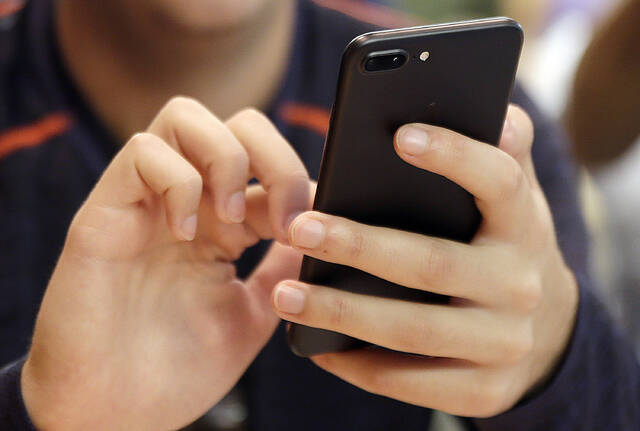https://naviga.triblive.com/opinion/editorial-schools-should-walk-line-with-pros-and-cons-of-cellphones/
Editorial: Schools should walk line with pros and cons of cellphones

Cellphones are a great tool.
They are the Swiss Army knife of electronics. If you have a smartphone in your pocket, you have more than just a way to call home. You can take a picture or make a video. You can send an email or read a book. A smartphone is an encyclopedia and a calculator, a ruler and a compass, a mirror and a flashlight, a television and a magnifying glass, and infinitely more.
But we all know there is more to a cellphone than the benefits. They come with a list of problems, too.
They can be addictive. They can be distracting. They can be loud. They can also spark competition. Do you have the latest? The most fashionable? The most functional? The most expensive?
They can disrupt dinner tables and movies. They are restricted on airplanes and can be limited at hospitals.
And so it’s not surprising that schools are struggling with how to handle them in the classroom. While the age when someone gets their first phone varies by family or child, Pew Research Center says 96% of students high school age or younger have cellphones.
Some schools embrace this. Kids will have the phones, so why not integrate them into lessons? Why ask parents to buy expensive scientific calculators when a $1 app can serve the same purpose? Why can’t the camera be used to make movies for presentations or take pictures for slide shows?
Some try to limit the temptations. Schools including Penn Hills High School, Pittsburgh Milliones, Provident Charter School, Obama Academy, City Charter High School and Washington High School and Junior High School will use Yondr pouches with magnetic locks to prevent access to phones during the day. Others are more low-tech, requiring kids to turn phones off or stow them away at the start of class.
Schools might want to err more on the side of walking a line — not banning the phones but not relying on them either. Not taking them away but not making them convenient.
Although this is a problem that no one had 40 years ago, there are other differences since then. Schools don’t have pay phones anymore, so how does your kid call home when band practice is canceled and he needs a ride home? That’s not a call you want to get at 3 p.m. when you could have gotten it at 10 a.m.
But that’s the everyday, mundane reason. There is also the reason no one wants to need. The call no one wants to get.
It’s the United 93 call. The Parkland call. The Uvalde call. The desperate call that brings help or the last call to say goodbye.
Schools should absolutely have a way to keep control and teach kids how to do math without the calculator app. However, maybe that control should stop short of preventing calls home until we are better at keeping violence locked out of schools.
Copyright ©2025— Trib Total Media, LLC (TribLIVE.com)
